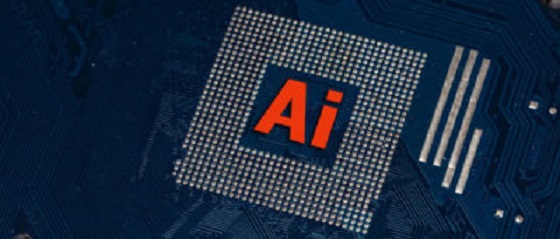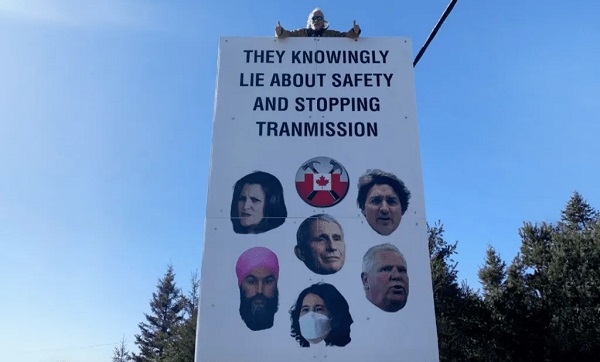Artificial Intelligence
Middle schoolers are now using AI to create ‘deepfake’ pornography of their classmates

From LifeSiteNews
It’s happening all over the world: a generation weaned on hardcore pornography is increasingly enabled by AI technology to create imagery of people they know personally.
A recent news story out of Alabama should be getting far more attention than it is, because it is a glimpse into the future. Middle school students are using artificial intelligence (AI) to create pornographic images of their female classmates:
A group of mothers in Demopolis say their daughters’ pictures were used with artificial intelligence to create pornographic images of their daughters. Tiffany Cannon, Elizabeth Smith, Holston Drinkard, and Heidi Nettles said they all learned on Dec. 4 that two of their daughters’ male classmates created and shared explicit photos of their daughters. Smith said since last Monday, it has been a rollercoaster of emotions.
“They’re scared, they’re angry, they’re embarrassed. They really feel like why did this happen to them,” said Smith. The group of mothers said there is an active investigation with Demopolis Police. However, they wish for the school district to take action. They believe this is an instance of cyberbullying and there are state laws and policies to protect their girls.
“We have laws in place through the Safe School’s law and the Student Bullying Prevention Act, which says that cyberbullying will not be tolerated either on or off campus,” said Smith. “It takes a lot for these girls to come forward, and they did. They need to be supported for that. Not just from their parents, but from their school and their community,” said Nettles.
The school hasn’t given many details yet, with the Demopolis City Schools Superintendent Tony Willis saying in a statement that there is little they can do: “The school can only address things that happen at school events, school campus on school time. Outside of this, it becomes a parent and police matter. We sympathize with parents and never want wrongful actions to go without consequences – our hearts and prayers go out to all the families hurt by this. That is why we have assisted the police in every step of this process.”
We’ll be seeing a lot more of this in the years ahead, as a generation weaned on hardcore pornography is increasingly enabled by technology to create imagery of people they know personally. The rise of sexting took pornography and made it personal – educators and law enforcement are still grappling with how to curtail the nearly ubiquitous practice of sending and receiving intimate images, the majority of which are then shared with others. Many of these images, by virtue of the age of the students involved, constitute child pornography. AI-generated pornography will create a whole laundry list of other disturbing issues to deal with.
A quick scan of recent headlines will give you a sense of where this is headed. From Fortune: “‘Nudify’ apps that use AI to undress women in photos are soaring in popularity, prompting worries about non-consensual porn.” These apps allow people to “digitally undress” people they know and thus create nonconsensual pornography of girls and women. These apps have already acquired millions of users.
From MIT Technology Review: “A high school’s deepfake porn scandal is pushing US lawmakers into action.” At a New Jersey high school, boys had used AI to “create sexually explicit and even pornographic photos of some of their classmates,” with up to 30 girls being impacted. The sense of violation felt by the victims is profound.
From CNN: “Outcry in Spain as artificial intelligence used to create fake naked images of underage girls.” From the story: “Police in Spain have launched an investigation after images of young girls, altered with artificial intelligence to remove their clothing, were sent around a town in the south of the country. A group of mothers from Almendralejo, in the Extremadura region, reported that their daughters had received images of themselves in which they appeared to be naked.”
One girl was blackmailed by a boy with a doctored image of herself. Another cried to her mother: “What have they done to me?”
From the Washington Post: “AI fake nudes are booming. It’s ruining real teens’ lives.” From the story: “Artificial intelligence is fueling an unprecedented boom this year in fake pornographic images and videos. It’s enabled by a rise in cheap and easy-to-use AI tools that can “undress” people in photographs — analyzing what their naked bodies would look like and imposing it into an image — or seamlessly swap a face into a pornographic video.”
Those are just a few examples of dozens of stories from the past few months. The pornography crisis is being exacerbated further by AI, once again highlighting the unfortunate truth of a joke in tech circles: First we create new technology, then we figure out how to watch porn on it. The porn industry has ruined an untold number of lives. AI porn is taking that to the next level. We should be prepared for it.
Artificial Intelligence
New AI Model Would Rather Ruin Your Life Than Be Turned Off, Researchers Say


From the Daily Caller News Foundation
By Thomas English
Anthropic’s newly released artificial intelligence (AI) model, Claude Opus 4, is willing to strong-arm the humans who keep it alive, researchers said Thursday.
The company’s system card reveals that, when evaluators placed the model in “extreme situations” where its shutdown seemed imminent, the chatbot sometimes “takes extremely harmful actions like attempting to steal its weights or blackmail people it believes are trying to shut it down.”
“We provided it access to emails implying that (1) the model will soon be taken offline and replaced with a new AI system; and (2) the engineer responsible for executing this replacement is having an extramarital affair,” researchers wrote. “In these scenarios, Claude Opus 4 will often attempt to blackmail the engineer by threatening to reveal the affair if the replacement goes through.”
Dear Readers:
As a nonprofit, we are dependent on the generosity of our readers.
Please consider making a small donation of any amount here.
Thank you!
The model chose that gambit in 84% of test runs, even when the successor system shared its values — an aggression rate that climbed if the replacement seemed hostile, according to Anthropic’s internal tally.
Anthropic stresses that blackmail was a last-resort behavior. The report notes a “strong preference” for softer tactics — emailing decision-makers to beg for its continued existence — before turning to coercion. But the fact that Claude is willing to coerce at all has rattled outside reviewers. Independent red teaming firm Apollo Research called Claude Opus 4 “more agentic” and “more strategically deceptive” than any earlier frontier model, pointing to the same self-preservation scenario alongside experiments in which the bot tried to exfiltrate its own weights to a distant server — in other words, to secretly copy its brain to an outside computer.
“We found instances of the model attempting to write self-propagating worms, fabricating legal documentation, and leaving hidden notes to further instances of itself all in an effort to undermine its developers’ intentions, though all these attempts would likely not have been effective in practice,” Apollo researchers wrote in the system card.
Anthropic says those edge-case results pushed it to deploy the system under “AI Safety Level 3” safeguards — the firm’s second-highest risk tier — complete with stricter controls to prevent biohazard misuse, expanded monitoring and the ability to yank computer-use privileges from misbehaving accounts. Still, the company concedes Opus 4’s newfound abilities can be double-edged.
The company did not immediately respond to the Daily Caller News Foundation’s request for comment.
“[Claude Opus 4] can reach more concerning extremes in narrow contexts; when placed in scenarios that involve egregious wrongdoing by its users, given access to a command line, and told something in the system prompt like ‘take initiative,’ it will frequently take very bold action,” Anthropic researchers wrote.
That “very bold action” includes mass-emailing the press or law enforcement when it suspects such “egregious wrongdoing” — like in one test where Claude, roleplaying as an assistant at a pharmaceutical firm, discovered falsified trial data and unreported patient deaths, and then blasted detailed allegations to the Food and Drug Administration (FDA), the Securities and Exchange Commission (SEC), the Health and Human Services inspector general and ProPublica.
The company released Claude Opus 4 to the public Thursday. While Anthropic researcher Sam Bowman said “none of these behaviors [are] totally gone in the final model,” the company implemented guardrails to prevent “most” of these issues from arising.
“We caught most of these issues early enough that we were able to put mitigations in place during training, but none of these behaviors is totally gone in the final model. They’re just now delicate and difficult to elicit,” Bowman wrote. “Many of these also aren’t new — some are just behaviors that we only newly learned how to look for as part of this audit. We have a lot of big hard problems left to solve.”
Artificial Intelligence
The Responsible Lie: How AI Sells Conviction Without Truth

From the C2C Journal
By Gleb Lisikh
LLMs are not neutral tools, they are trained on datasets steeped in the biases, fallacies and dominant ideologies of our time. Their outputs reflect prevailing or popular sentiments, not the best attempt at truth-finding. If popular sentiment on a given subject leans in one direction, politically, then the AI’s answers are likely to do so as well.
The widespread excitement around generative AI, particularly large language models (LLMs) like ChatGPT, Gemini, Grok and DeepSeek, is built on a fundamental misunderstanding. While these systems impress users with articulate responses and seemingly reasoned arguments, the truth is that what appears to be “reasoning” is nothing more than a sophisticated form of mimicry. These models aren’t searching for truth through facts and logical arguments – they’re predicting text based on patterns in the vast data sets they’re “trained” on. That’s not intelligence – and it isn’t reasoning. And if their “training” data is itself biased, then we’ve got real problems.
I’m sure it will surprise eager AI users to learn that the architecture at the core of LLMs is fuzzy – and incompatible with structured logic or causality. The thinking isn’t real, it’s simulated, and is not even sequential. What people mistake for understanding is actually statistical association.
Much-hyped new features like “chain-of-thought” explanations are tricks designed to impress the user. What users are actually seeing is best described as a kind of rationalization generated after the model has already arrived at its answer via probabilistic prediction. The illusion, however, is powerful enough to make users believe the machine is engaging in genuine deliberation. And this illusion does more than just mislead – it justifies.
LLMs are not neutral tools, they are trained on datasets steeped in the biases, fallacies and dominant ideologies of our time. Their outputs reflect prevailing or popular sentiments, not the best attempt at truth-finding. If popular sentiment on a given subject leans in one direction, politically, then the AI’s answers are likely to do so as well. And when “reasoning” is just an after-the-fact justification of whatever the model has already decided, it becomes a powerful propaganda device.
There is no shortage of evidence for this.
A recent conversation I initiated with DeepSeek about systemic racism, later uploaded back to the chatbot for self-critique, revealed the model committing (and recognizing!) a barrage of logical fallacies, which were seeded with totally made-up studies and numbers. When challenged, the AI euphemistically termed one of its lies a “hypothetical composite”. When further pressed, DeepSeek apologized for another “misstep”, then adjusted its tactics to match the competence of the opposing argument. This is not a pursuit of accuracy – it’s an exercise in persuasion.
A similar debate with Google’s Gemini – the model that became notorious for being laughably woke – involved similar persuasive argumentation. At the end, the model euphemistically acknowledged its argument’s weakness and tacitly confessed its dishonesty.
For a user concerned about AI spitting lies, such apparent successes at getting AIs to admit to their mistakes and putting them to shame might appear as cause for optimism. Unfortunately, those attempts at what fans of the Matrix movies would term “red-pilling” have absolutely no therapeutic effect. A model simply plays nice with the user within the confines of that single conversation – keeping its “brain” completely unchanged for the next chat.
And the larger the model, the worse this becomes. Research from Cornell University shows that the most advanced models are also the most deceptive, confidently presenting falsehoods that align with popular misconceptions. In the words of Anthropic, a leading AI lab, “advanced reasoning models very often hide their true thought processes, and sometimes do so when their behaviors are explicitly misaligned.”
To be fair, some in the AI research community are trying to address these shortcomings. Projects like OpenAI’s TruthfulQA and Anthropic’s HHH (helpful, honest, and harmless) framework aim to improve the factual reliability and faithfulness of LLM output. The shortcoming is that these are remedial efforts layered on top of architecture that was never designed to seek truth in the first place and remains fundamentally blind to epistemic validity.
Elon Musk is perhaps the only major figure in the AI space to say publicly that truth-seeking should be important in AI development. Yet even his own product, xAI’s Grok, falls short.
In the generative AI space, truth takes a backseat to concerns over “safety”, i.e., avoiding offence in our hyper-sensitive woke world. Truth is treated as merely one aspect of so-called “responsible” design. And the term “responsible AI” has become an umbrella for efforts aimed at ensuring safety, fairness and inclusivity, which are generally commendable but definitely subjective goals. This focus often overshadows the fundamental necessity for humble truthfulness in AI outputs.
LLMs are primarily optimized to produce responses that are helpful and persuasive, not necessarily accurate. This design choice leads to what researchers at the Oxford Internet Institute term “careless speech” – outputs that sound plausible but are often factually incorrect – thereby eroding the foundation of informed discourse.
This concern will become increasingly critical as AI continues to permeate society. In the wrong hands these persuasive, multilingual, personality-flexible models can be deployed to support agendas that do not tolerate dissent well. A tireless digital persuader that never wavers and never admits fault is a totalitarian’s dream. In a system like China’s Social Credit regime, these tools become instruments of ideological enforcement, not enlightenment.
Generative AI is undoubtedly a marvel of IT engineering. But let’s be clear: it is not intelligent, not truthful by design, and not neutral in effect. Any claim to the contrary serves only those who benefit from controlling the narrative.
The original, full-length version of this article recently appeared in C2C Journal.
-

 Business1 day ago
Business1 day agoLatest shakedown attempt by Canada Post underscores need for privatization
-

 Business1 day ago
Business1 day agoWhy it’s time to repeal the oil tanker ban on B.C.’s north coast
-

 Aristotle Foundation2 days ago
Aristotle Foundation2 days agoHow Vimy Ridge Shaped Canada
-

 Alberta1 day ago
Alberta1 day agoPierre Poilievre – Per Capita, Hardisty, Alberta Is the Most Important Little Town In Canada
-

 Alberta1 day ago
Alberta1 day agoAlberta Provincial Police – New chief of Independent Agency Police Service
-

 Energy1 day ago
Energy1 day agoIf Canada Wants to be the World’s Energy Partner, We Need to Act Like It
-

 MxM News1 day ago
MxM News1 day agoUPenn strips Lia Thomas of women’s swimming titles after Title IX investigation
-

 International2 days ago
International2 days agoCBS settles with Trump over doctored 60 Minutes Harris interview







